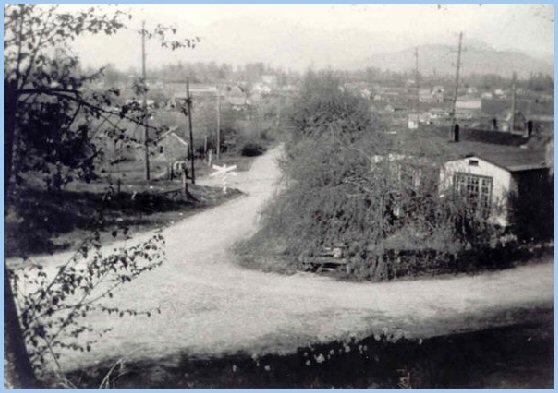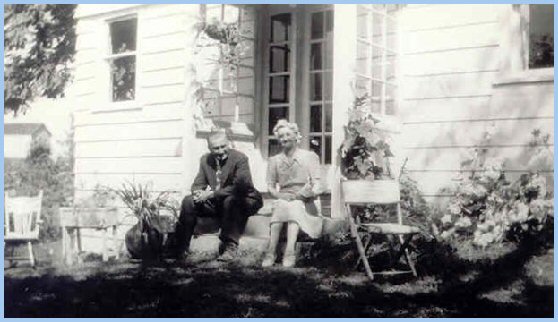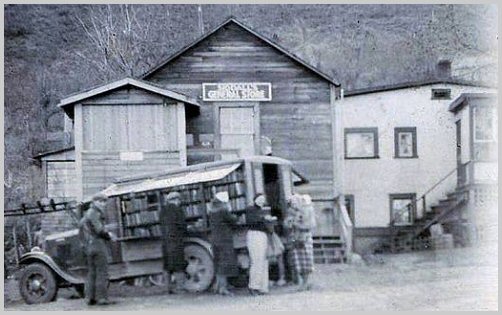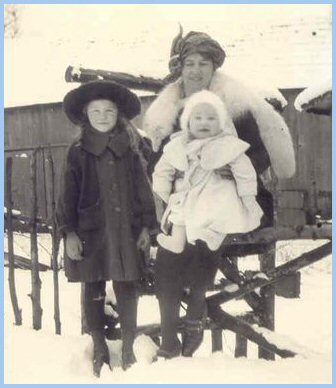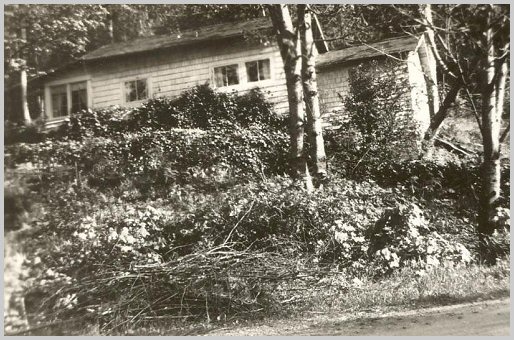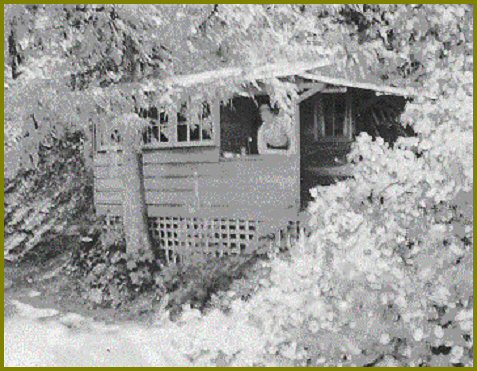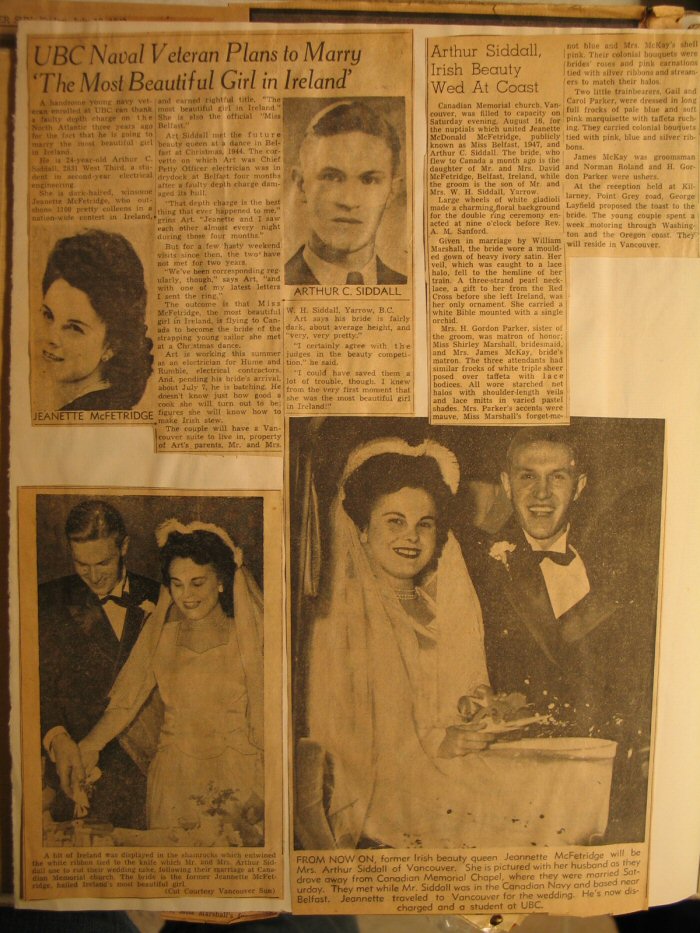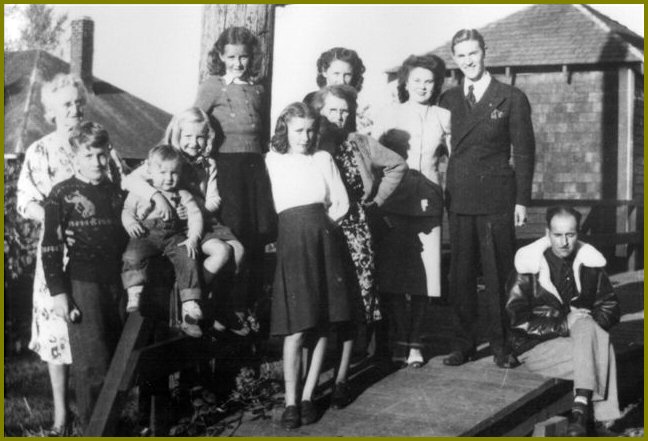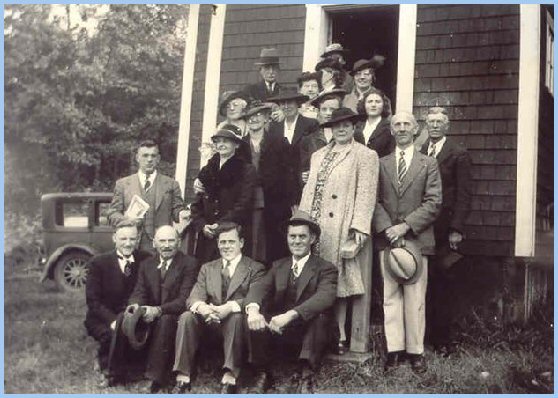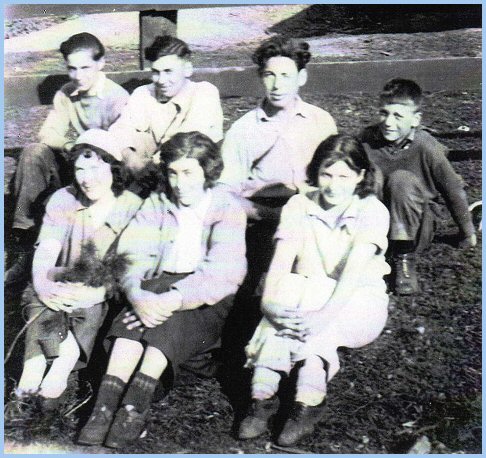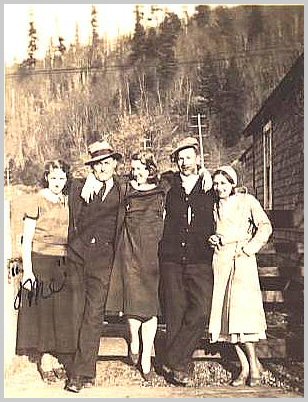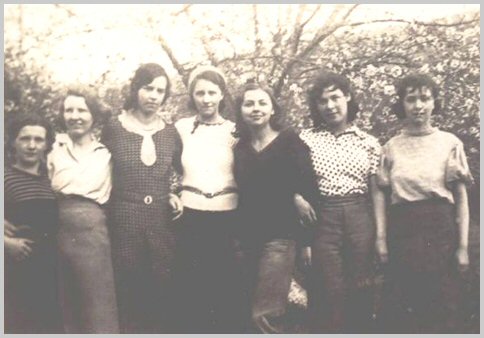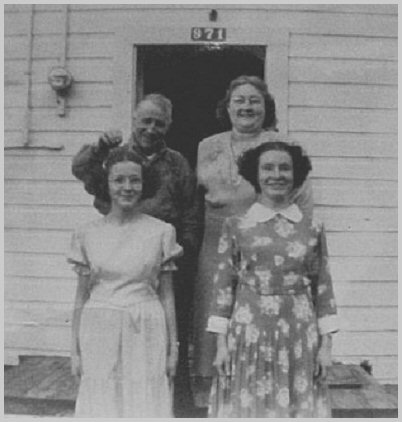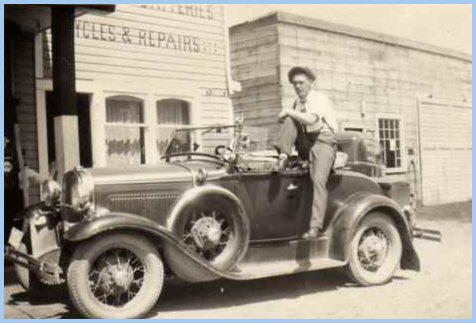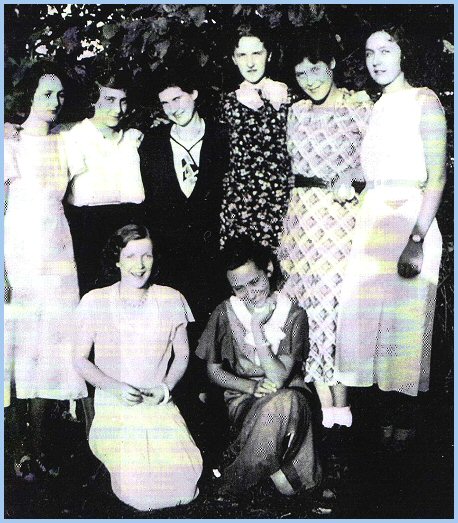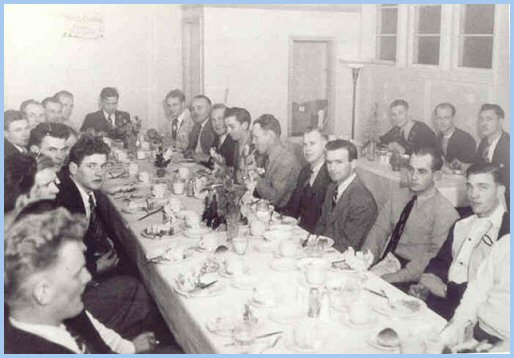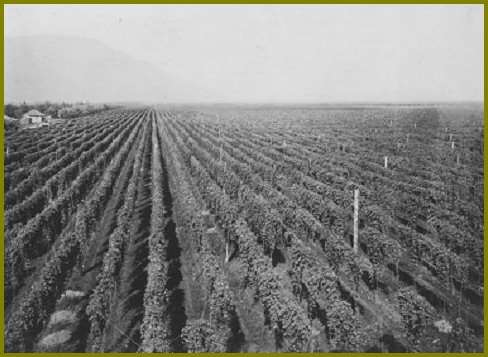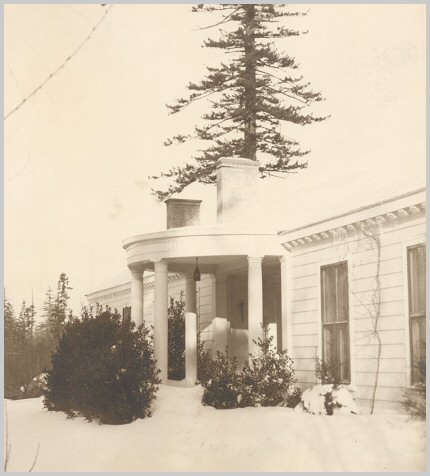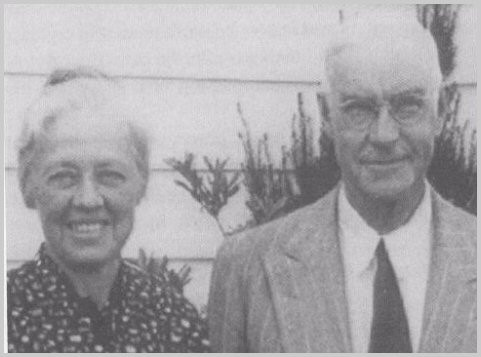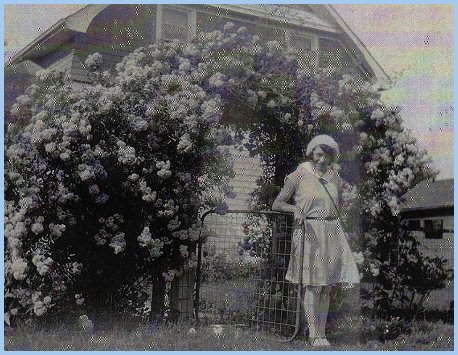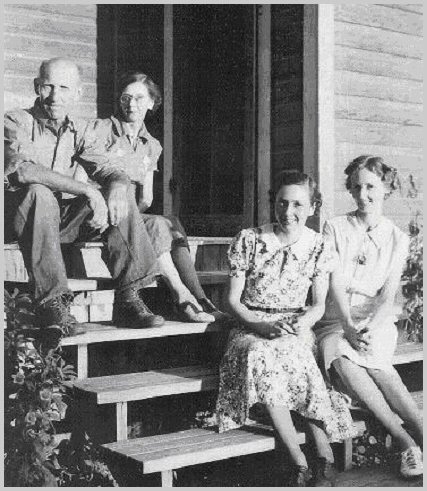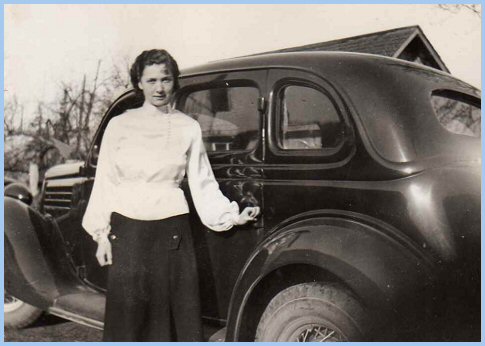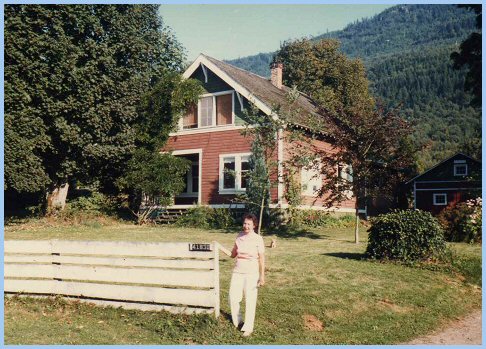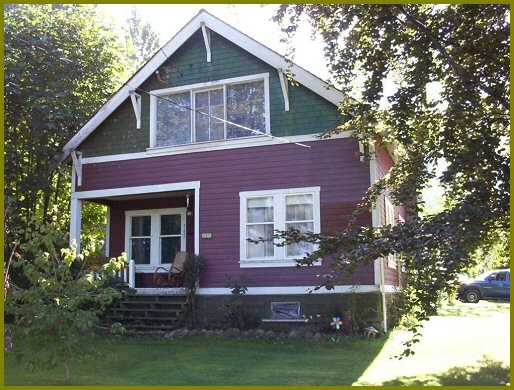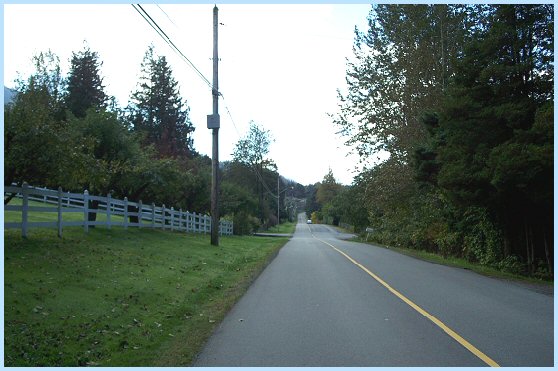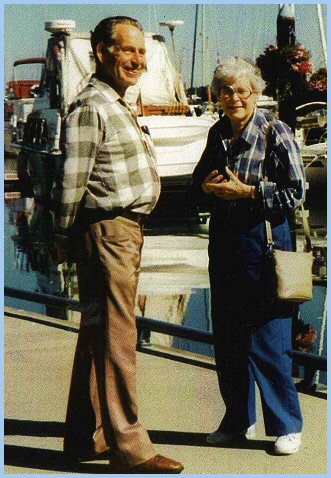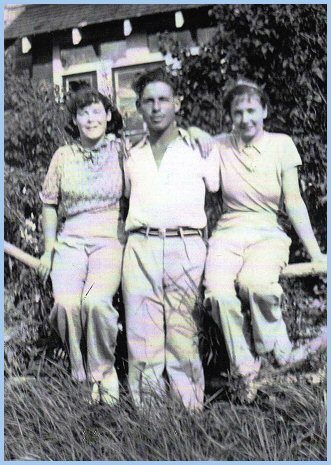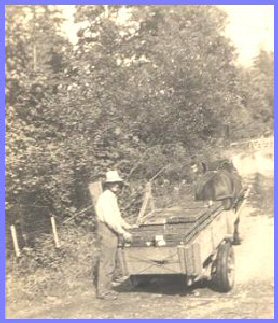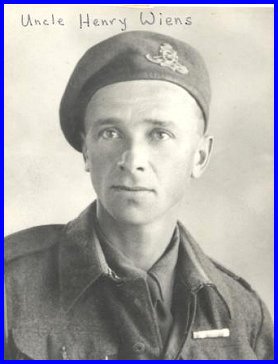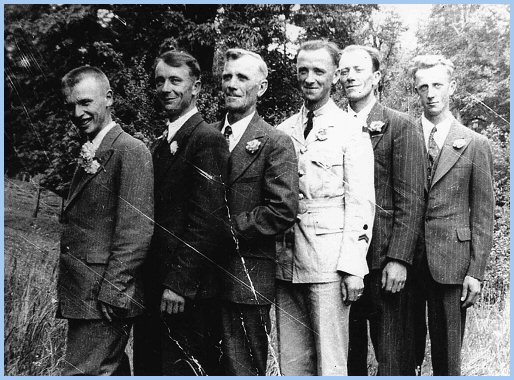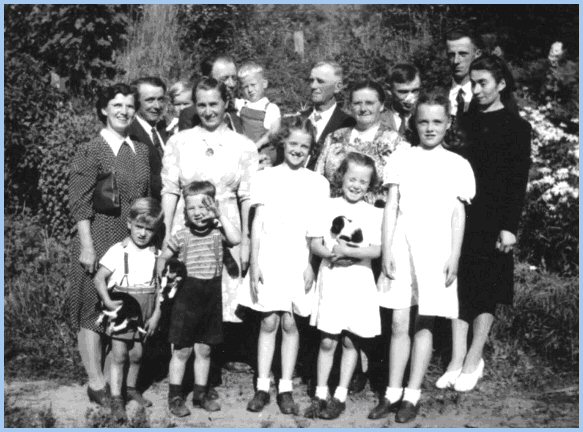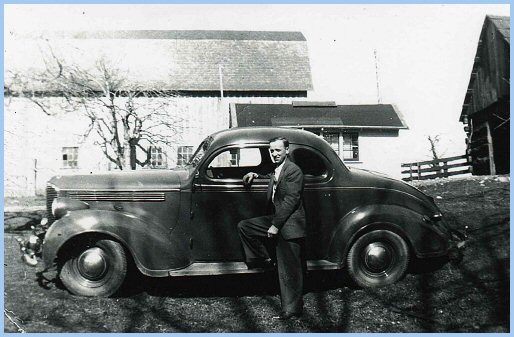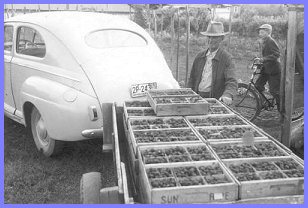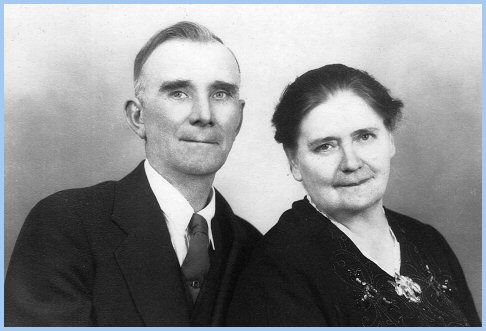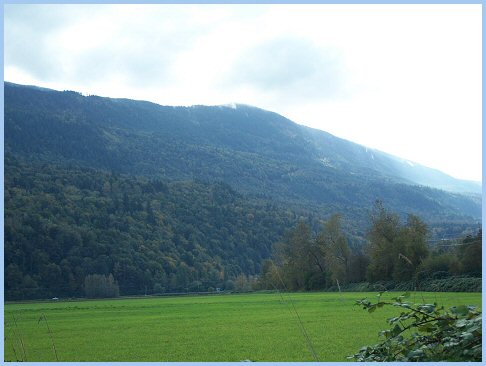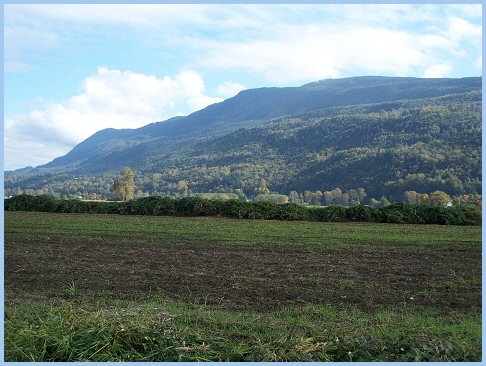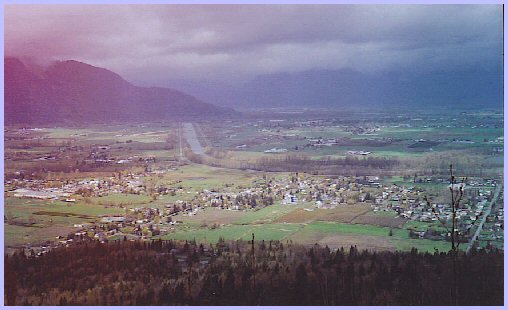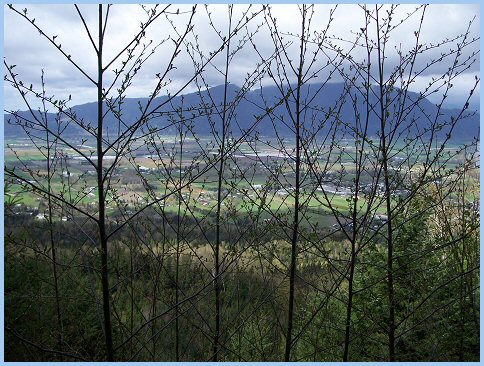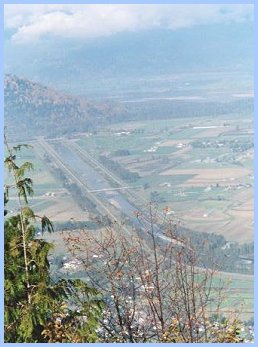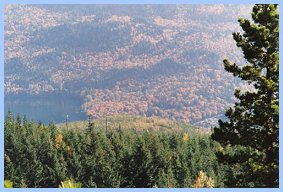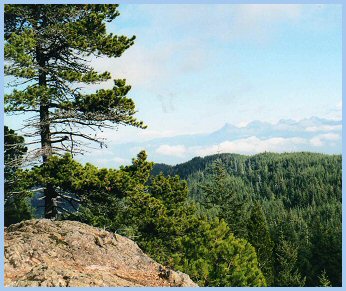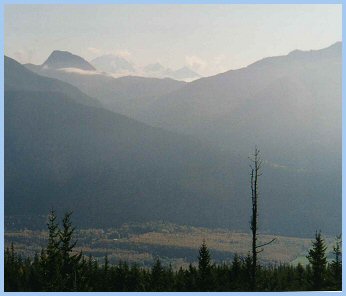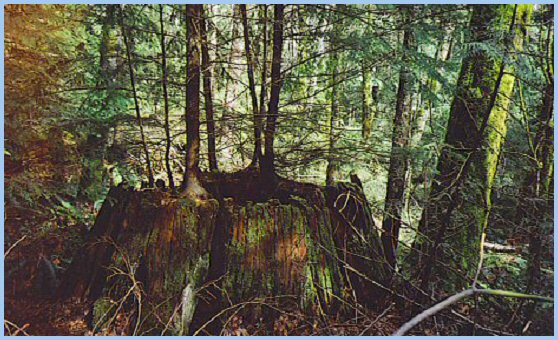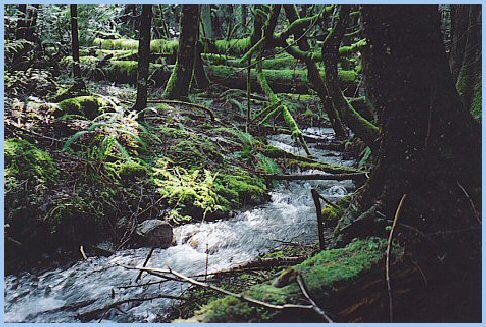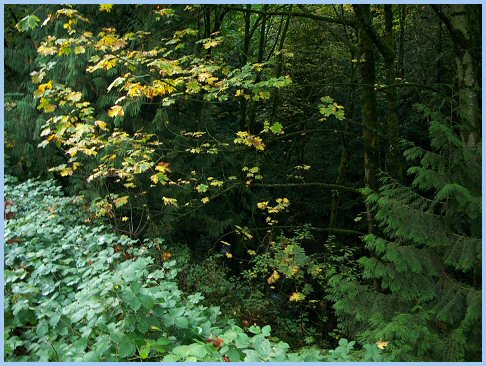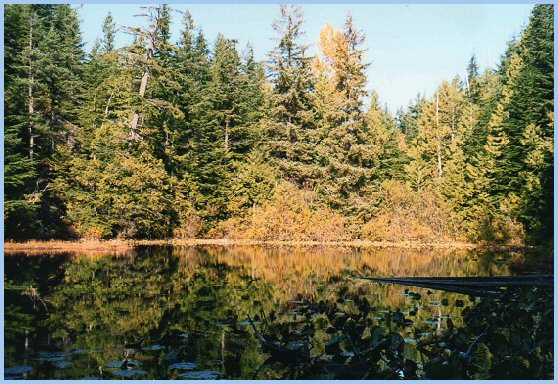|
|
|
|
Yarrow, British Columbia
Edited by
Esther Harder, Edwin Lenzmann, and Elmer Wiens
Majuba Hill
by
Chester Brown and Elmer Wiens
 |
| Elmer Wiens and Chester Brown - August 1, 2009 |
|---|
An excerpt of this page is reprinted on the web page of the Vancouver Sun in its BC150—Celebrating Our Diversity—series.
|
Majuba Hill |
|
Siddall Family Siddal Family History From Barmby Moor to Yarrow. The following picture shows Wilson Road's junction with Yale Road at Siddall's on the Vedder Mountain side of Yarrow Station, during the 1930's. Knox's farm sits across the railway tracks and to the left (west) of Wilson Road heading due north. Yale Road (Majuba Hill Road) runs to the left (west) and to the right (east). Today, Yale Road running east is a heritage site called the "Old Yale Wagon Road," known locally as "Lovers Lane." The small house seen in the picture just above Siddall's house was known locally as the "Sugar Shack" during the 1960's. Chilliwack Mountain rests in the distant background, south of the Fraser River.
In his history of the Chilliwack area post offices, Cecil Coutts states that Ella (Eva Elmina) Siddal succeeded James Hounsome on the recommendation of Elihu Manuel, a Liberal politician. Bill and Ella's house and store were ideally located for a post office. In 1928, Yale Road was the main highway, and Siddall's store prospered with the influx of immigrants. Eventually, the post office was moved to the "north side of the Siddall home" facing the railway tracks and Yarrow Station (Coutts 111-12).
Yarrow Pioneers lived far away from commercial entertainment in Chilliwack, New Westminster, and Vancouver. A few lines from a poem by Ella Siddall to her friend Elizabeth Brown capture a typical Yarrow Pioneer evening.
William and Ella Siddall's children were Vivian and Arthur.
The dwellings of Majuba Hill and Yarrow's pioneers were often rough and ready, constructed from logs and cedar shakes cut from local timber. Lumber was hewn by hand, cut at a small sawmill on Majuba Hill, or brought in by train to Yarrow Station and then dragged by a team of horses to the building site (Klaassen 110). Outbuildings were similarly, but more roughly built.
Bill and Ella Siddall provided postal services from the Wilson-Yale Road junction until 1948, when Bill Siddal built a new Post Office east of the Yarrow Elementary School in downtown Yarrow.
In 1952, John Kehler (1920-1989) assumed the responsibilities of postmaster. Chester Brown writes, "By 1929, Yarrow consisted of a station on the B.C. Electric rail line, a post office, and country store. Yarrow was a community of perhaps a dozen homes with a medical doctor. The Knox farmstead existed in the immediate vicinity, while several families were established on Majuba Hill within a mile west of Yarrow."
Majuba Hill (Hillcrest) School was built in 1903 a half-mile west of Yarrow to serve the Vedder River Flats and Majuba Hill. The building also housed the Hillcrest United Church until WW II (Harms 103-108). After the Hillcrest School closed in 1928, the building served until the mid 1930's as a community hall, with Saturday night dances.
In Yarrow: A Portrait in Mosaic, Agatha Klaassen quotes Ella Siddall's recollections of the pioneers of Majuba Hill. John Broe and his family were among the early Majuba Hill pioneers. The Broes cleared land for an orchard and dairy cows, also raising chickens and pigs. The Broes homestead was the "centre of many a lively party for their mountain neighbours."
Ella Siddall writes, "There was a sizeable community that stretched along Majuba Hill on Old Yale Road. There were the Bellrose Family, at the foot of Majuba Hill Road West, and the Towns at the point above Sinclair Siding, the DeGraws, the Dickies, the Mallards, the Golders, the Olsens, the Maitlands, and the Knox Family on Wilson Road South at the foot of Vedder Mountain" (Klaassen 108). The members of the Knox family were prominent citizens of the community of Yarrow, built on the one thousand acres of land Joseph and Margaret Knox sold to C.E. Eckert. Joseph and Margaret had two children, George Marshall and Mary Elizabeth.
George Marshall married Henrietta Kirkpatrick; their children were Ethel and Edith. Mary Elizabeth married James Cameron; their children were Muriel and Gordon. Ellas Siddall's poem to her friend Elizabeth Brown describes her visit to her Knox friends and neighbours.
Mennonite settlers who displaced the Majuba Hill pioneers shared a communal focus on the Mennonite churches under the mountain. Much like Vedder Mountain overshadows Yarrow during the winter months, eventually the "Gemeinde" that arose in "Yarrow Proper" from the influx of Mennonite settlers overshadowed the Majuba Hill community in importance.
"For a few decades, however, Majuba Hill was home to a vibrant, close-knit community" (Harms 107).
Along with the entrepreneurial Siddall's, Yarrow's farmers and commercial concerns utilized the B.C. Electric Rail Line to bring in commodities, machinery, and equipment, and to ship agricultural products and finished goods. In the early 1940's, C.C. Funk built his Feed Supply Mill east of Siddall's store, adjacent to the tracks across from Yarrow Station.
Sports contribute an integral component to the life of a community. During the 1930's and early 1940's, Yarrow's softball teams played their recreational and league matches on the grounds of the Yarrow School situated in downtown Yarrow. Yarrow's young, pioneer athletes were victorious in many games played on the diamond at the school ground's northwest corner.
While the U.S.A. Prohibition period from 1920-1933 on "the sale, manufacture, and transportation of alcohol for consumption" virtually destroyed the American hop industry, it created a bonanza for Canadian hop growers.
The American Henry Norton Ord, a joint partner of Canadian Hop Yards, and owner of Ord hop fields on Sumas Prairie (Fuggle Hop Garden) and in Kamloops, built a mansion on the western portion of Majuba Hill overlooking Sumas Prairie and western Yarrow.
Chester Brown recalls the Ord family arriving each summer from California in their chauffeur driven limousine for their summer retreat, to join Mr Ord while he managed his Canadian assets. The family of Mrs Ord, Helen Huntington Holladay, had almost a century of experience growing hops. She took over running the company when Henry Ord died in 1955, selling the Sumas fields to John I. Haas, but keeping the Kamloops hop yard (Sleigh 266-67). Numerous young, Mennonite men from Yarrow, who relocated to Kamloops each fall to work in the hop yards, enjoyed their freedom from parental censure in "worldy ways."
Helen and Henry Ord had three children, Edmund, John and Caroline. George and Ann Wasylenchuk (c. 1890-1966) lived on the mountain side across the road from the Ords. Their children were Mary, John, Nick, William, Helen, and Peter.
Maitland Family Margaret (Maitland) Bigmore writes, "In 1910, Fred and Mabel Maitland moved from their 5 acre farm in Chilliwack to Majuba Hill, with their three year old daughter, Evelyn. They bought the William and Mary Jane Chadsey farm, with orchards, barns and farmhouse. Mabel (Smith) Maitland's Uncle and Aunt were Chester and Hannah Chadsey. Circa 1918, they sold this farm as soldier settlement land, as soldiers were returning from overseas after World War I, and taking up land."
According to Margaret Maitland, obtained from text provided by Bill Bigmore, her parents in partnership with Herbert Smith (Mabel's father) bought 40 acres farther along Old Yale Road. They cleared about 15 acres, where they built their homes, grew grain, and made pastures for the horses and cattle.
After the B.C. Electric Tram was completed to Chilliwack in 1910, Fred Maitland shipped his milk by rail to Sardis. In the summer, he took his milk cans to the Yarrow station in his car, while in the winter he transported them on a horse-drawn sleigh. The milk from Fred and Mabel's eight cows were cooled by setting the milk cans in a large trough of running water.
Margaret Maitland concludes, "The old home on Majuba Hill is still there and is occupied! Since 1996 a subdivision has built up around it and everything looks different. Amidst the new surroundings, however, many memories whisper down from the forests of Vedder Mountain looking down on the historic Sumas Prairie."
In 2004, Bev Somers, daughter of Evelyn (Maitland) Knowles, took a trip to Majuba Hill with her dad to see her mother's childhood house. She took the following photograph of her mother's childhood house.
Chester Brown writes, "Mrs Porter lived immediately east of Maitlands. She was a World War 1 war widow from Saskatchewan. She had one son Jim, three years older than I. They moved to the U.S.A. I lost touch with them until the early 1990's, when they were living in Anacortes, Washington."
While the Siddall's lived at Yarrow Station, the Belleroses lived at the western extremity of Majuba Hill on their Lake View farm. George Bellerose (1845-1918) built the farm house that served as the Belrose post office after the BCE Railway was completed, with George as postmaster from 1912 to 1918. George's wife, Elizabeth (1850-1952), lived at Lake View farm until her death in 1952 at the age of 101. Their children were Vincent, George, Ernest, and Lulu.
Chester Brown continues, "In 1982, Margaret Maitland and I organized a small get-together of former Yarrow people for a drive from Vancouver to Yarrow and Cultus Lake. Our group consisted of my sister, Adrian Hurt (formerly Annetta Brown), Margaret Bigmore (Maitland), Vivian Parker (Siddall), Edward Hudson, Marian Rexford, and myself."
Chester Brown concludes, "The next picture of my sister, Adrian Hurt, and I was taken a few years ago. Today, she is 91 years young, while I am 89 years old. Adrain still lives at home in Bellevue, Washington, while I live in a condo in Sydney, B.C.
I really enjoyed working on this project, Yarrow Pioneers: Vedder River Flats and Majuba Hill. Today, September 17, 2008, I am off on a cruise of the Eastern Mediterranean with stops in Egypt and Greece." Thank you, Chester Brown! Funny How Time Slips Away! Yeah.
Wiensz Family
Mennonite settlers from the Canadian Prairies willingly purchased farms in the Yarrow area during the 1930's and 1940's. Relatives already living in the area provided information on available properties to prospective incomers. Elmer Wiens writes, "In 1943 my Wiensz grandparents sold their Saskatchewan wheat farm and relocated to a farm on Majuba Hill. This farm, overlooking Yarrow, was situated on the edge of the plateau on the north side of Old Yale Road, above and west of Eckert Road's terminus with Vedder Mountain. The creek flowing through the farm entered a canyon along Old Yale Road, where the road bends to mount the plateau known as Majuba Hill, when one negotiates the road travelling east to west."
"Grandfather Wiensz cooled the milk from his cows in the shed straddling the creek. This milk-cooling shed was down from the house, and next to the driveway leading up to Yale Road. Using a wooden wheelbarrow he built, grandfather transported the cans of milk to a platform beside the road to be picked up each morning by the FVMPA milk-truck. Because there was no bridge across the creek, cars splashed through the driveway gravel-ford beside the footbridge, next to the shed.
"In 1944 Uncle Henry Wiensz joined the Canadian Military Forces. After his training, the military transferred him overseas where he served at the front as a motorcycle dispatch rider in the liberation of Holland."
The extended Wiensz family enjoyed gathering at the Majuba Hill Farm for Sunday afternoon dinners, conversation and fellowship.
As a civilian again, Uncle Henry worked for many years for the Canadian Postal Service in Vancouver. The next picture shows Henry Wiensz visiting our grandparents, Maria and Peter Wiensz, with his new Ford Coop.
In the background, one sees Grandfather's cow barn, and the original barn overlooking Yarrow Proper on the plain below Vedder Mountain. Peter and Nettie Wiens' property lies due north on the slope between Grandfather's farm and the BCE Railway tracks, at the southern end of Ratzlaff Road. Elmer Wiens concludes, "In 1952 my grandparents sold their Majuba Farm to the Spenst family, and moved to Clearbrook, B.C. They purchased a house and acreage west of the Clearbrook MB Church on the north side of Old Yale Road. This fertile farm yielded superb crops of strawberries and raspberries, much to the delight of Uncle Alvin Wiensz."
Vedder Mountain With its colourful, but often drab play of the seasons, Vedder Mountain was a steady physical and mental presence—it was always on ones mind. Like a colossal, Jurassic sturgeon deposited petrified by the receding Fraser glacier, it stretches from Switzer Creek at Vedder Crossing in the east, turning south at Arnold in the west into the U.S.A. toward Mount Baker. One necessarily grasps at a mountain's gestalt from a superfluity of distances and perspectives. To obtain the sense of a mountain's shape—its ascending pattern of thickets and grassy benches, densely tree-clad slopes, crags, and precipices—one must view the mountain from various locations, angles, distances, and directions.
Similarly, one must climb the mountain to obtain the gestalt of its surroundings. Mid-way up Vedder Mountain lies the railroad bed built by the Vedder Logging Company during the early 1930's. From its vantage, one acquires a superb view of the village of Yarrow.
The trail leading up to the logging tracks offers a commanding view of Sumas Prairie and Sumas Mountain, screened through a copse of spring, pussy willows.
From Vedder Mountain's peak due south of Yarrow, one looks down to the north onto the Vedder Canal, Sumas Mountain, and the Fraser River, and down to the south onto Cultus Lake and Columbia Valley.
Completing the panorama, one looks through the haze east to Mount Cheam, and southwest across Columbia Valley to the mountains in the U.S.A.
Vedder Mountain supports a second-growth rainforest, coveted by provincial foresters for its productiveness. A network of old logging roads and trails permits access to charming mountain locales to even the most casual, weekend hiker.
A turbulent stream, sparkling in the filtered sunshine, struggles through moss-covered roots, logs, and branches, dragged by gravity down its rock-strewn stream-bed.
Near the mountain's bottom, the stream disappears, consumed by a canyon chaotic with cedar, maples, salmonberry bushes, decadent mushrooms, lurking stinging nettle, and slippery ferns.
Pollution and global warming have reduced the numbers of frogs and toads indigenous to Vedder Mountain. Spotted frogs, Pacific tree frogs, Red-legged frogs, and Western toads inhabit the mountain's ponds, and streams, competing with introduced species such as Bullfrogs, and Green frogs. The trail from the Cultus Lake Highway to Vedder Mountain's peak goes by a small lake that was so well known for its large frog population, that it was tagged locally as Frog Shit Lake. Today this pond is a pristine alpine lake, with its clear water virtually free of frog egg clusters, tadpoles, and frogs.
| |||||||||||||||||||||||||||||||||||||||||||||||||||||||||||||||||||||||||||||||||||||||||||||||||||||||||||||||||||||||||

|
Copyright © Elmer G. Wiens: EgwaldTM Web Services
|
